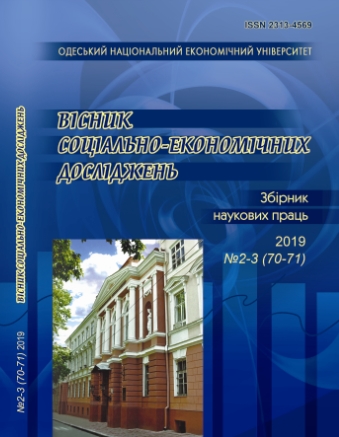World experience of medical tourism clusters development
DOI:
https://doi.org/10.33987/vsed.2-3(70-71).2019.40-52Keywords:
public-private partnership, medical tourism, cluster policy, clustering, health careAbstract
The article considers the world experience of medical tourism clusters creation and development. An important component of medical tourism clusters development is promotion of clusters at the international level, advertising, scientific and medical cooperation, various segments of services consumers attracting, etc. The stages of national programs development in the medical tourism sphere in Israel, Germany, Turkey, Singapore, India, Thailand and other countries, which annually invest millions of dollars in the medical infrastructure development, the purchase of the latest diagnostic equipment, and innovative treatment technologies implementation, are investigated. The best examples of experience in the medical tourism development are summarized; models of medical tourism clusters creating in leading countries, mechanisms for creating, specializing and developing medical tourism clusters in the world for the subsequent use of this experience in the medical tourism clusters creation and development in Ukraine are investigated. World tendencies are analyzed regarding an increase in the supply of additional services, an increase in the level of a medical and diagnostic scientific base, including due to the creation of medical tourism clusters in which these components are successfully combined. The world trends of increasing the supply of additional services, the level of medical and diagnostic scientific base increasing, including through the medical tourism clusters creation, in which these components are successfully combined, are analyzed. The further implementation of public-private partnerships experience in tourism and medical sectors of Ukraine is proposed. These mechanisms will allow the medical institutions to gain more economic freedom and tools for improving of their services quality. Thus, clinics will have the opportunity to raise the comfort of staying in medical institutions to a higher level, to improve the transportation services, purchase modern equipment, and train medical personnel of the highest professional level, etc.
References
European Cluster Excellence Initiative (ECEI): The quality label for cluster organizations – criteria, processes, framework of implementation (2019), available at: https://ec.europa.eu/growth/industry/policy/cluster/excellence_en.
Harryono, M., Huang, Yu-F. (Tom), Miyazawa, K., Sethaput, V. (2006). Thailand medical tourism cluster, Harvard Business School Microeconomics of Competitiveness, available at: www.deik.org.tr›contents-fileaction-14405.
Babkin, O. V. (2008). Special types of tourism [Spetsialni vydy turyzmu], Feniks, Rostov-na-Donu, 252 s. [in Ukrainian]
Baiev, V. B. (2014). Economic prerequisites for medical tourism development in Ukraine [Ekonomichni peredumovy rozvytku medychnoho turyzmu v Ukraini], Naukovi pratsi MAUP, Vyp. 43 (4), s. 163–167 [in Ukrainian]
Kyfiak, V. F. (2013). Medical tourism development in the regions of Ukraine [Rozvytok medychnoho turyzmu v rehionakh Ukrainy], Visnyk Universytetu bankivskoi spravy NBU, No. 1 (16), s. 30–33 [in Ukrainian]
Popova, M. L. (2016). Clusters in the USA: the role and place of small business [Klastery v SShA: rol i mesto malogo biznesa], Vestnik Karagandinskogo universiteta, Seriya Ekonomika, No. 1, s. 125–130, available at: http://rep.ksu.kz//handle/data/7197 [in Russian]
Borg, M., Karlsson, M., Pariani, A., Sordello, F., Zhou, Z. (2017). Dubai: a cluster for medical tourism. Industry clusters and firm competitiveness, available at: http://www.clusterobservatory.eu/permalink/ eb9d5186-fac0-11e7-85be-4b82e643446b.pdf.
Bawareer, A., Rahman, A., Barkhuu, O., Ilic, N. & Alag, R. (2016). Medical tourism cluster. Microeconomics of competitiveness, available at: https://mail.google.com/mail/u/0/?tab=wm&ogbl# inbox/QgrcJHsHkKRplgfvlVCfjDmGfxwGKRqzLHg?projector=1&messagePartId=0.9.
De Vera, M., Huang, B., Khan, O., Qin, Zh. (Alice), Tan, A. (2008). Medical tourism in the Philippines. Microeconomics of competitiveness: firms, clusters and economic development, available at: https://mail.google.com/mail/u/0/?tab=wm&ogbl#inbox/QgrcJHsHkKRplgfvlVCfjDmGfxwGKRqzLHg ?projector=1&messagePartId=0.3.
Porter, M. E. (1998). Clusters and the new economics of competition, Harvard Business Review, Boston, available at: https://hbr.org/1998/11/clusters-and-the-new-economics-of-competition.
Lisnycha, O. M. (2017). Legal regulation of medical tourism in Ukraine [Pravove rehuliuvannia medychnoho turyzmu v Ukraini], Naukovyi visnyk Khersonskoho derzhavnoho universytetu, No. 1 (23), s. 99–103, available at: http://www.lj.kherson.ua/2017/pravo03/part_1/23.pdf [in Ukrainian]
Petrova, N. B., Mushchinska, N. Yu. (2011). The role of public-private partnership in the tourist clusters formation [Rol derzhavno-pryvatnoho partnerstva v formuvanni turystskykh klasteriv], Komunalne hospodarstvo mist, No. 100, s. 373–393, available at: http://tourlib.net/statti_ukr/petrova2.htm [in Ukraine]
Sokolenko, S. I. (2004). Clusters in the global economy [Klastery v hlobalnii ekonomitsi], Lohos, Kyiv, 848 s. [in Ukrainian]
Shvets, Yu. Yu. (2011). The influence of management and self-organization processes on the cluster functioning and development [Vliyanie protsessov upravleniya i samoorganizatsii na funktsionirovanie i razvitie klastera], Aktualnye problemy ekonomiki, No. 9 (123), s. 164–169 [in Russian]
Fedorenko, F. D., Tugay, A. M., Goyko, A. F. (2008). The concept of cluster policy in Ukraine [Kontseptsiia klasternoi polityky v Ukraini], Ekonomika ta derzhava, No. 11, s. 5–15 [in Ukrainian]
Downloads
Published
Issue
Section
License
Copyright (c) 2019 Socio-Economic Research Bulletin

This work is licensed under a Creative Commons Attribution 4.0 International License.






